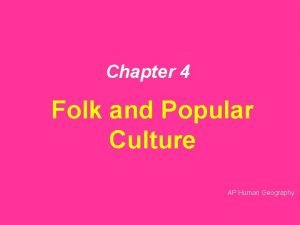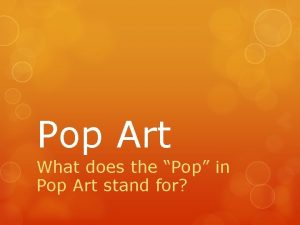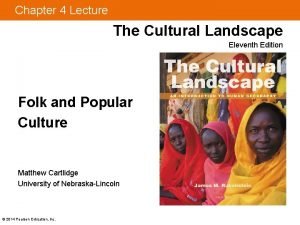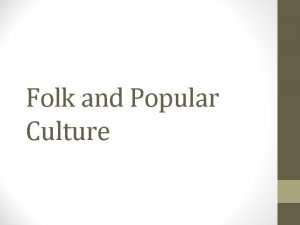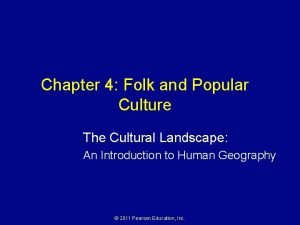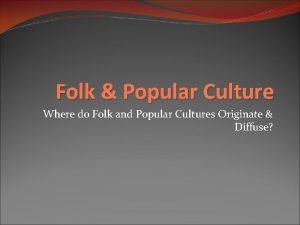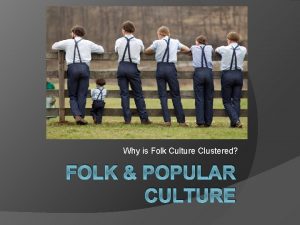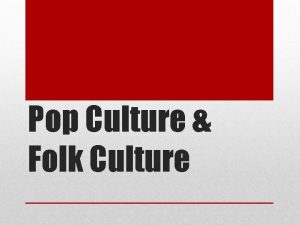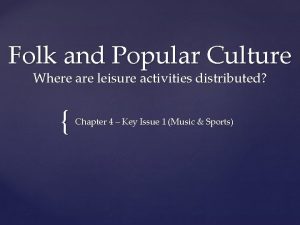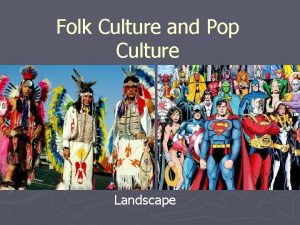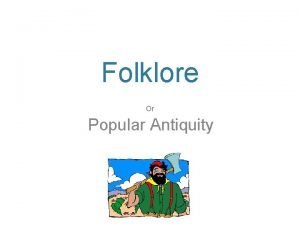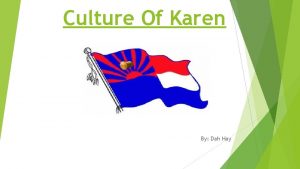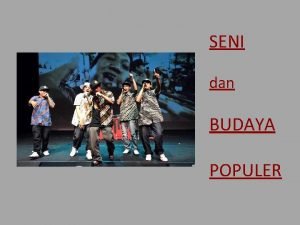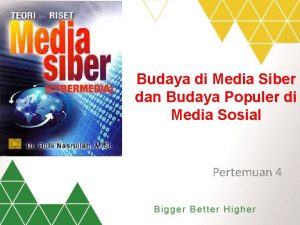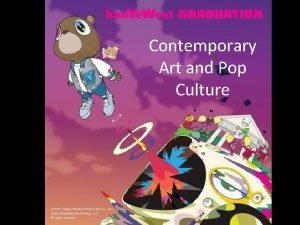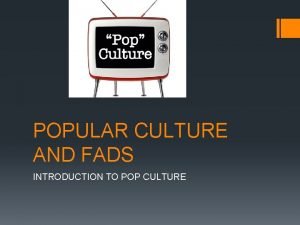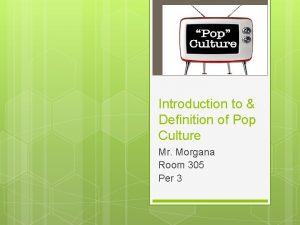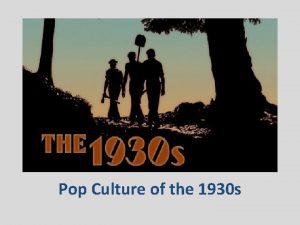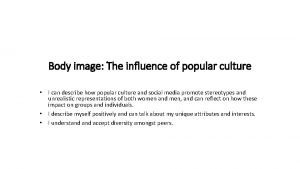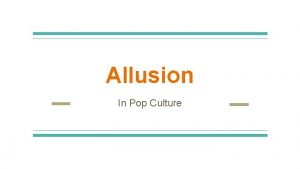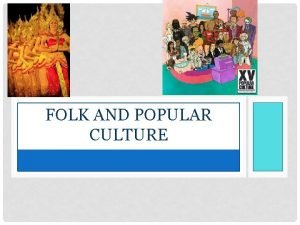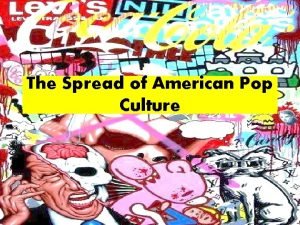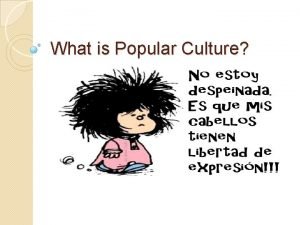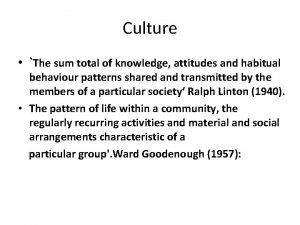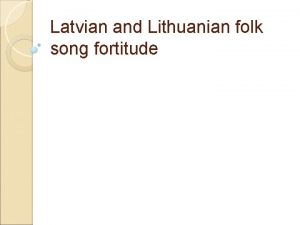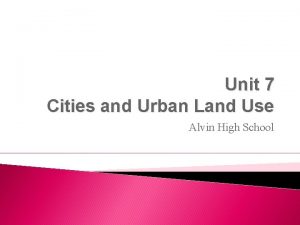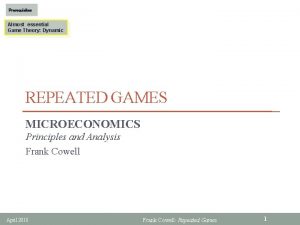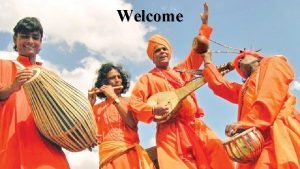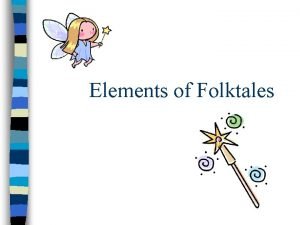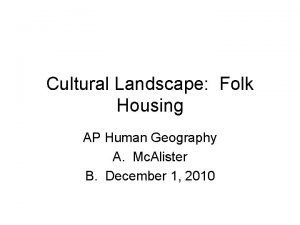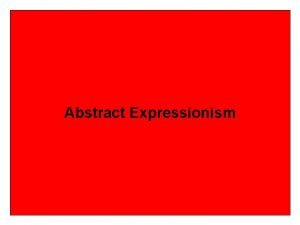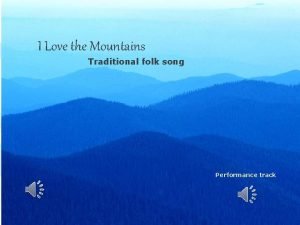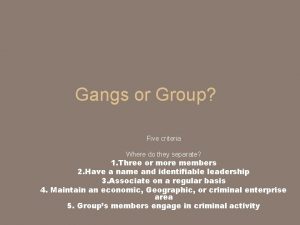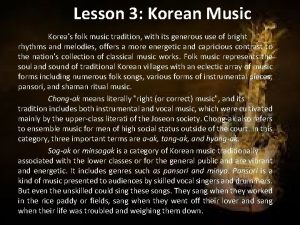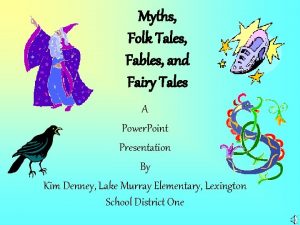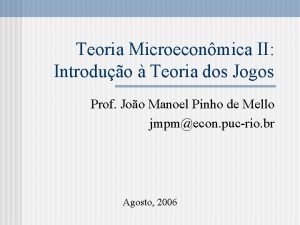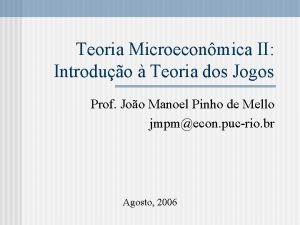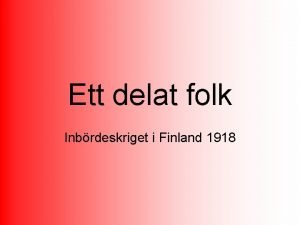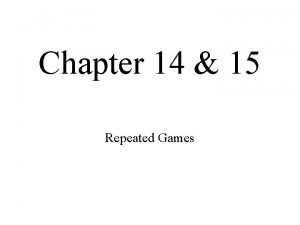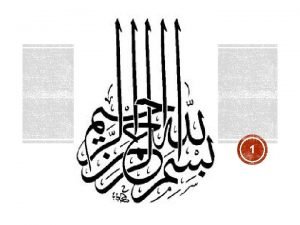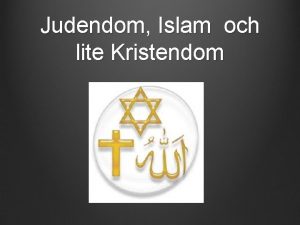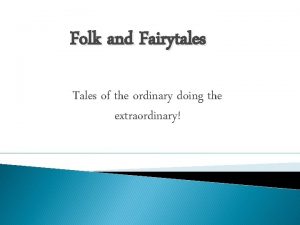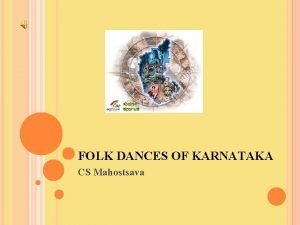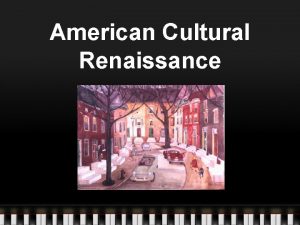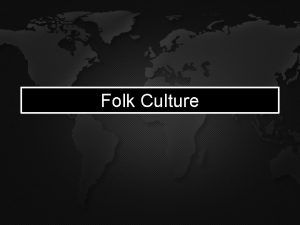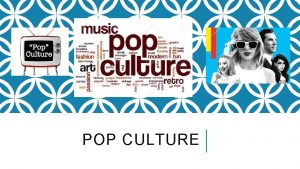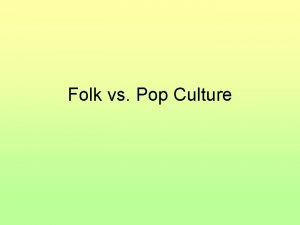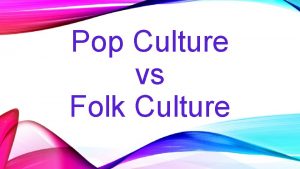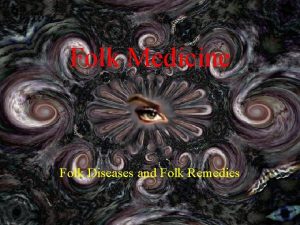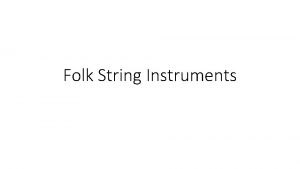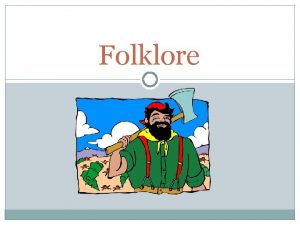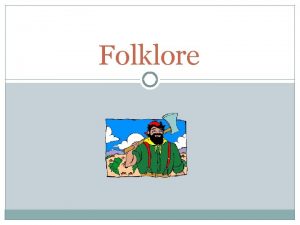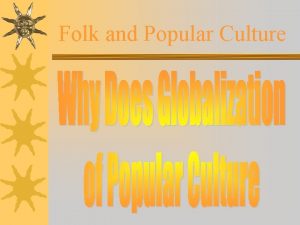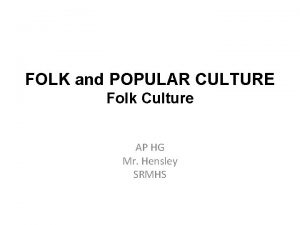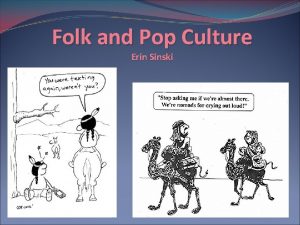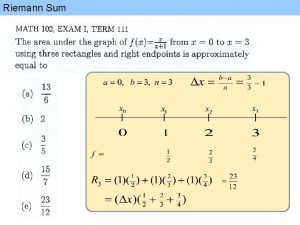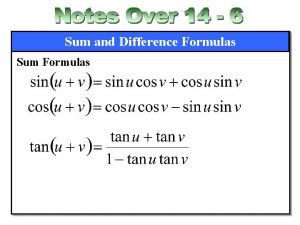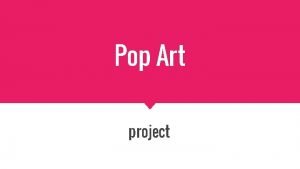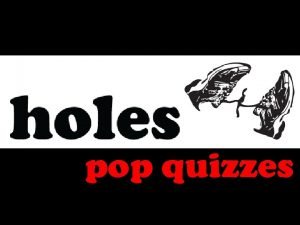Pop vs Folk Culture What is Culture Sum



















































































- Slides: 83

Pop vs. Folk Culture

What is Culture? • Sum of all the typical activities of a group of people – Values – Material items – Political institutions • Pop/Folk Culture refers to material items – 2 aspects of material culture • Survival techniques – food, shelter, clothing • Leisure activities – art, sports, music, movies, etc.

Pop (changes from time to time) vs. Folk (changes from place to place) • Large groups of people • Heterogeneous groups • Small, isolated groups • Homogeneous groups • Changes quickly • Slow to change • Dispersed – Global scale • • • Ex. Wearing jeans, eating fast food, • attending sporting events Clustered – local scale Little interaction w/ others Ex. Wearing a sari, driving a horse and buggy

Folk Culture • Stable and close knit • Usually a rural community • Tradition controls • Resistance to change • Buildings erected without architect or blueprint using locally available building materials • anonymous origins, diffuses slowly through migration. Develops over time. • Clustered distributions: isolation/lack of interaction breed uniqueness and ties to physical environment.


Diffusion of Culture • Pop diffuses…? – Hierarchically through major centers i. e. NYC, LA, Chicago, London – Pretty soon, what’s there is here • Folk diffuses…? – Relocation i. e. movement of Amish people from PA. to KY.

Why is F. C. Clustered? • Isolation – Keeps folk cultures from changing much • Physical Environment – Limits some choices of how people can survive – BUT REMEMBER POSSIBILISM!! 1. Some cultures in similar environments have different cultural traits 2. Some cultures in different environments have similar cultural traits (pop culture) • Some examples of these…

a. Food customs (repetitive act of a group is a custom) throughout the U. S. b. Clothing different in similar environments c. Food attractions – Abipone Indians in Paraguay jaguars = strength – Fertility foods? ? d. Taboos (especially food taboos) – People in the U. S. don’t eat insects (decent nutritional value) TED talk by Peter Menzel on the local diets of the world http: //www. youtube. com/watch? v=Zs. YOh. Rdlpuw – Religious food taboos (often environmental reasons) • • Hindus don’t eat beef Muslims/Jews don’t eat pigs – Talking on the phone in the bathroom – Americans don’t sunbathe nude 2. Different housing styles: combo of social customs & environment

Why Do Folk Cultures survive or NOT? http: //www. boredpanda. org/vanishing-tribes-before-they-pass-away-jimmy-nelson/ Stunning portraits of the world’s vanishing tribes http: //www. youtube. com/watch? v=m. PPx. Bp. TP 5 h. E Before They Pass Away – Jimmy Nelson TED Talk (13. 31)

Why is P. C. Widely Dispersed? • Diffusion of Housing – Housing b/co standard across cultures in MDCs • Cheaper to build • Built by professionals – Housing varies across time NOT space • Diffusion of Clothing – Dress = Status/Income – (Folk Culture: Dress = Cultural Group) – Clothing choices NOT environmentally driven • Diffusion of Food – MDCs consume LOTS of snack foods & alcohol (higher standards of living) – Huge $$$ on advertising to encourage consumption

Popular Culture Clothing: Jeans and other clothing have become valuable status symbols in many regions including Asia and Russia despite longstanding folk traditions.

Diffusion of TV, 1954– 2005 Fig. 4 -14: Television has diffused widely since the 1950 s, but some areas still have low numbers of TVs per population.

Role of Tech. in Diffusion Pop Culture • Diffusion of TV – Most popular leisure activity in the world – Most popular means of communicating pop culture around the world • Most MDC countries have at least 1 TV in every household • Diffusion of the Internet – Growing means of communicating pop culture – Beginning to diffuse from U. S. to other MDCs more rapidly and now to developing and LDCs


Problems Associated w/ Globalization of P. C. • Threatens F. C. – Muslims view Western dress as a threat • Males lose power over females • Miss Afghanistan • Problems of looking “Westernized” – Effect on religious taboos and habits • Less people observe food/clothing restrictions • Negative popular culture transfers (pg. 137) – Increase in prostitution in LDCs – Blood Diamonds (Conflict Diamonds) in Africa • MDCs dominate the media (CNN) – Over-represents Western ideas – Focus on negative aspects of LDCs • Control Foreign countries economically?

Problems Cont. • Impact on the Environment – Uniform landscapes = most suburban areas VERY similar – Depletion of nat. resources • • • Golf courses use up a lot of land Over-killing of animals for products (Africa) Eating meat instead of grains – inefficient and expensive; Suitability for LDCs? ? – Pollution • MDCs create MUCH more waste than LDCs (where folk culture is more prevalent) • (Keep in mind folk cultures also produce waste)


Urban Sprawl = Progress? http: //www. geographyalltheway. com/igcse_geography/imagesetc/urban_spra wl. gif

Popular Culture Effects on Landscape: breeds homogenous, “placeless” (Relph, 1976), landscape · Complex network of roads and highways · Commercial Structures tend towards ‘boxes’ · Dwellings may be aesthetically suggestive of older folk traditions • Planned and Gated Communities more and more common Disconnect with landscape: indoor swimming pools, desert surfing, indoor ski resort in Dubai.

Ski Dubai?

Mc. Donald’s, Tokyo, Japan Swimming Pool, West Edmonton Mall, Canada Mc. Donald’s, Jerusalem

Countries without a Mickey Ds


Linguistics • Language @ heart of culture – W/o lang. , culture cannot be passed on – Literary tradition cultural continuity • • • Ideograms v. alphabets Mandarin = oldest surviving writing system Printing press! • Between 4 -8, 000 different lang. (depends on definition) – (ethnologue. com lists 7, 413) – 600+ in India most are – 1000+ in Africa preliterate

Washoe lived at Central Wash. U. She learned 800+ signs in Amer. Sign Lang. AND taught her kids how to communicate!! Vocalization is the crucial part of the def. of lang! Xhosa language – South Africa http: //www. youtube. com/watch? v=KZlpcro. VYw Khoisan – Namibia – http: //www. youtube. com/watch? v=Nz 44 Wi. TVJww

I. Language Classification A. Language Family = collection of related langs. with a “prehistoric” ancestor – Indo-European is largest 50%; – Sino-Tibetan (20%) is 2 nd – Afro-Asiatic (Northern Africa/Middle East) – Austronesian (Southeast Asia) – Niger-Congo (Sub-Saharan Africa) – Dravidian (India)

Diffusion of Indo-European languages The origin of words we use all the time http: //www. businessinsider. com/european-maps-showing-origins-of-common-words-2013 11? utm_content=bufferb 7 d 3 a&utm_source=buffer&utm_medium=facebook&utm_campaign=Buffer

Hungarian surrounded by Indo-European languages! Why?

B. Language Branch • Collection of related langs. w/ a more recent ancestor • More recent language divergence • Indo-European has 8 branches: – 4 major: • Germanic, Romance, Balto-Slavic, Indo-Iranian – 4 minor: • Hellenic, Albanian, Celtic, Armenian

C. Language Group • Common modern ancestor w/ similar vocab. and grammar – Ex: West Germanic v. North Germanic – English is West Germanic D. Language i. e. English, Hindi, Arabic, etc.

E. Dialects: Standard vs. vulgar • Standard language (standard “dialect”) 1. Sets quality of a lang. , (part of cultural ID & national concern) 2. May be sustained by gov’t policies (ex: tests for teachers or officials) 3. Powerful people decide the standard language • Ex of standard lang. : – Chinese = “Mandarin” – British English = “British Received Pronunciation” – Sec of State. Kerry English NOT Pres. Bush English – American Sign Language

Why is BRP and American English so different? • What cohorts left Britain for the USA? – Mostly lower/middle class immigrants (not speakers of BRP) – Webster “national” American English dialect • B/c of time and isolation vocab. & pronunciation considerably different – Different words for new inventions – Examples? ? ? – American vs. British English. . http: //esl. about. com/library/vocabulary/blbritam. htm? once=true &terms=british-american

English Dialects http: //www. youtube. com/watch? v=3 Ugpf. Sp 2 t 6 k Amy Walker 21 Accents (2: 36) http: //www. youtube. com/watch? v=4 Nri. DTxseog Amy Walker, How to do an American accent? (6: 40) http: //www. youtube. com/watch? v=0 VSd. Ya. X 114 Q Jeff Foxworthy Words of the South http: //www. businessinsider. com/southern-sayings-2013 -10 13 Southern Sayings that the rest of America will not understand Some other great video clips to introduce you to dialects and variations in language. The cockney pronunciation segment from My Fair Lady (the Rain in Spain) and the hilarious clip of Lucy and Ricky discussing how they (Ricky) will teach their child proper English pronunciation http: //www. youtube. com/watch? v=MJr 9 SSJKk. II (4: 47) http: //www. youtube. com/watch? v=g 10 j. FL 423 ho (5: 25)

• • Vulgar Dialects Variants of the standard lang. – Regional accents reveal origin – Dialects marked by diff. in vocab. = “isogloss” – Isogloss = line separating 2 diff. words 4 same concept Ex. “Coke” vs. “soda” vs. “pop” Ex. “Crabbing” http: //www. reelseo. com/best-vimeo-videosnovember-2013/ Regional Variations – More common dialects differ in pronunciation IF 2 dialects become “mutually unintelligible” two separate languages emerge “language divergence”

Language Divergence The basic process: time and isolation 1. 2. 3. 4. Separation Time & isolation branch into dialects Dialects remain isolated Pronunciations change, new words created for new discoveries 5. More time & isolation dialects become discrete languages “mutually unintelligible” – Ex. Vulgar Latin Romance Languages • How does this relate to time-distance decay?

II. Languages of the World Our goal… Know what language/ language branch/ language family is spoken in almost every place on Earth!! 1. Mandarin = most common primary lang. Chinglish. Can it be translated to English? http: //www. nytimes. com/slideshow/2010/05/03/world/asia/20100503_CHINGLISH. html? _r=0 2. English = 2 nd just passed … Spanish is 3 rd then Hindi and Arabic. *English lang. of 100 s of millions – English official lang. 40+ countries – 2 billion+ in a country w/ English official language – Who is #2 in English speakers b/h U. S. ? (India =“ 398 scheduled languages, 11 extinct”; 22 official languages) Many not mutually understood. Each state has an official language! 3. *Could English be spoken in some places JUST for business and not casually? Why and where? Six Official languages of U. N. ? _________

Languages of Europe 1. Indo-Euro. lang. dominates 2. Language map & pol. boundaries usually overlap – SW Europe is ___Romance___ – NW Europe is __Germanic______ – E. Europe is ____Slavic___ – (Keep in mind Estonia, Hungary and Finland – Uralic language family)


European Languages cont. • Romance languages dominate in 5 states • E. boundary of Germ. = Germanic Balto. Slavic tongues • Believed Uralic lang. spread 7000 -10, 000 years ago • Basque language = mystery in history = “isolated lang. ”

Langs of India http: //www. mapsofindia. com/culture/indian-languages. html • 4 lang. fams – Indo-Euro. most speakers – Dravidian 2 nd – Who cares about other 2 families? ? Austroasiatic and Indo-Pacific • 15 major lang. ; all but four are Indo. European (Bengali and Hindi most common) • Dravidian langs clustered in SE (Tamil/Telugu) • Pol. divisions reflect regional langs • Hindi is the main Indo-Euro lang. (Indo. Iranian branch) w/ 300+ million speakers

Languages of Africa 1. Most preliterate 2. Grouped into 4 fams North Africa = Central Africa = Kalahari-Namib = South Africa = 3. Largest fam. = Niger-Congo 4. Oldest are the Khoisan languages (clicks)

Mandarin: One lang. or many? (Sino-Tibetan family) 1. World's oldest written lang. 2. Spoken by the greatest contiguous pop. cluster on Earth 3. Divided by dialects that are mutually unintelligible – Mandarin dominates with about 900 million speakers – Written lang. ALWAYS same unifying force – Several efforts have been made to create a truly national language… today’s pinyin

South America • Impact of Colonialism • Treaty of Tordesillas divided New World into 2 spheres: – Western “half” = Spain – Eastern “half” = Portugal

Proto-Indo-European Language Hearth and Diffusion

Proto-Indo-European (PIE) lang? • Indo-European lang = world's most common • Proto-Indo-European (common ancestor of Indo-European) • Use reverse lang. diverg. to guess all I-E langs came from ONE lang. – Similar words – Hypothesize about origin?

Diffusion of P. I. E lang? A. Conquest theory 1. Originated N of Black Sea (steppes of Ukraine/Russia) 2. Lang. diffused west thru conquest! • • Superior tech. (wheel) Domesticated horses

Historical Spread of the Chariot (Years are BC)

B. Agriculture Theory 1. Diffusion by SHARING ag. Techniques/spread of farming 2. Origin: Anatolia in Turkey (hilly words) 3. Supporting evidence: – Few words for plains but many for relief landforms – Few words for trees/animals that live on the plains – Leading hearth of ag. innovation nearby (Mesopotamia) – Some genetic evidence

III. Globalization vs. Local Diversity • Our goal: To be able to answer 2007’s FRQ well!!: • Globalization of lang. – Lingua franca? – Any common language spoken by peoples w/ diff. native tongues. (business purposes) – Exs: Swahili, Indonesian, Russian, Hausa, Arabic – English (most important) • Technology, Navigation, Education, Pop Culture, Tourism, Finance – Negative correlation b/t lingua franca & min. lang.

Swahili • Swahili has become the lingua franca of East Africa http: //www. glcom. com/hassan/lessons/useful_swahili_words. html – Developed from African Bantu languages, Arabic, and Persian – Has a complex vocabulary and structure

Language Replacement • Stronger culture forces lang. on less advanced people • Colonialism’s linguistic legacy: – Acculturation or assimilation? – Latin America – Treaty of Tordesillas – Africa – USSR – UK today • Globalization of L. F. + Lang. Rep. may = language extinction – (Sanskrit, Cornish, Native American lang. , etc. )

Pidgin • Mixture of 2 or more langs; allows comm. b/t speakers of different tongues. – Simple grammar easier to learn – Few synonyms – Learned as second languages. • aka “Contact Language” • Ex: Spanglish, Chinglish, Franglais, African pidgins

Creole and Creolization 1. Pidgins mother tongue a) Process = “Creolization” b) 2 languages blend together = one native language Ex. Swahili, Afrikaans, French Creole 2. Stable over time, complex grammar & vocab 3. Difficult to distinguish b/t dialect/pidgin/creole 4. Rubenstein = “lang. resulting from mixing of colonizer’s lang w/ indigenous lang. ”

Preservation of Local Diversity • Minority lang. revival because… – Maintenance of a unique culture • Amer. Indians • Quebecois in Canada • Spanish-speakers in the U. S. – Force for devolution (transfer of power away from central gov’t. ) • Basques in Spain • Maori in New Zealand (local autonomy) – Gov’t attempting to promote unity = “centripetal force” • • 22 official lang. in India 11 official lang. of South Africa 2 official lang. in Belgium 2 official lang. in Canada

Preservation cont. • Promote nationalism w/i a group of people = “centripetal force” – – – Hebrew in Israel Gaelic in Ireland/Scotland Quebec banning non-French signs & ads • Use of technology – Maintaining and reinforce lang – Welsh TV programs/radio stations – Spanish speakers w/ Spanish TV stations • To attract tourists – Unique experiences! – Signs & topynyms changed to reflect native culture

Multilingualism • VERY few monolingual states – Ex: Japan, Portugal, Poland, Venezuela, Lesotho – Most even have some people w/ minority lang. • Japan: 500, 000+ Koreans • Venezuela indigenous langs • Linguistic fragmentation = cultural pluralism? • Multilingual states = centrifugal force?

Multilingualism Case Studies • A. Nigeria – Unimaginable linguistic diversity – legacy of colonialism (some source suggest 500+ languages – 4 major regional lang. (Hausa, Igbo, Yoruba, and Fulani) – ~12 major local languages spoken by 1 to 5 million people – Adopted English as its "official language” • Has precluded major cultural conflict based on language • Caused problems for children first entering school knowing only traditional languages • Only spoken by small, urban minority

Multilingualism Case Studies B. Canada – Large French-speaking territory w/ even larger English-speaking area – French law and language sustained in Quebec – French language was protected in parliament and in the courts – Language divides the country – 60 Minutes – War of Words - Quebec Language Wars http: //www. youtube. com/watch? v=q. KOGg. Yaqwhg (7: 44) http: //www. youtube. com/watch? v=Iki-pwr. Cp. E 8 (5: 24)

Will Quebec succeed and secede?

Multilingualism Case Studies C. Belgium – Dutch-speaking region in the north & Frenchspeaking region in the south – Another Velvet divorce? – Brussels (capital) officially bilingual, Frenchspeaking majority – Language regions separate Romance and Germanic branches of Indo-European

Multilingualism Case Studies Belgium • Conflict has been largely nonviolent • Languages/ethnic issues dominate politics

D. Russia: During USSR the Russian language became the lingua franca

Multilingualism Case Studies F. Switzerland German speaking (63. 7%), French speaking (20. 4%), Italian speaking (6. 5%), Romansch (0. 5%)

Official languages • Serve different purposes – Used to enhance communication & unity among peoples who speak diverse traditional languages – Former African colonies sometimes adopt European languages – Creating an official language has caused problems for some countries • Ex: When Hindi was given official status in India, riots and disorder broke out in non-Hindi areas – Some former colonies chose two or more official languages

What is the official language of the USA?

30 states have declared English their official language

Why is it ironic that Britain does not have an official language?

The European Union 20 official languages its annual translation cost is 1. 3 billion They include: Danish, Dutch, English, Finnish, French, German, Greek, Italian, Portuguese, Spanish, Swedish. http: //news. nationalgeographic. com/news/ 2005/02/0222_050222_translation. html

Toponymy • The systematic study of place names – Place names can reveal much about the contents of a culture area • Place names will change/can cause controversy – Post Cold War Soviet Union cities went back to pre-Communism names – South Africa with new gov’t, change old names or not? ? – Post-Colonial African/Asian countries/cities – Hartsfield-Jackson Airport




Literary Traditions + Technology • Printing press and rise of national states a) Invented in 1588, in Germany b) Allowed for unprecedented production of texts c) Luther Bible for German and King James Bible for English Knowledge is no longer hierarchically diffused

True or False • If people of a large region speak languages that are somewhat different but still closely related, it is reasonable to conclude they migrated into that region relatively recently. • Languages with a common root but which are very different from each other indicate long-term modification.

Toponymy Historian George Stewart classified place names into ten categories a) Descriptive—Rocky Mountains b) Associative—Mill Valley, California c) Incident—Battle Creek, Michigan d) Possessive—Johnson City, Texas e) Commendatory—Paradise Valley, Arizona f) Commemorative—San Francisco g) Folk-etymology—Plains, Georgia, or Academia, Pennsylvania h) Manufactured—Truth or Consequences, New Mexico i) Mistake—–names involving historic errors in identification or translation

Nostratic Russian scholars have long been in the forefront of research on ancient languages (what else do they have to do? ? ) a) Vladislav Illich-Svitych and Aharon Dolgopolsky (1)Studied independently of each other (2)Came to similar conclusions pre-Proto-Indo-European language named Nostratic

Nostratic • No names for domestic plants or animals so the people were hunters and gatherers, not farmers • May date back 14, 000 years • Believed to be the ancestral language for many other languages • Nostratic links widely separated languages

What was vulgar Latin? Vulgar Latin in Roman Empire (roads) Collapse by Germanic tribes led to Vulgar Latin’s evolution to 5 Romance lang. What if two dialects reach a point of mutual unintelligibility?

The Greenberg hypothesis Proposed the migration to the Western Hem must have occurred much earlier than 12 -13, 000 years ago Why? There are 200 lang. families there and only 40 in the Old World

LANGUAGE REPLACEMENT • 15 -18 th centuries Latin America Treaty of Tordesilla’s Line of Demarcation 1490’s Creolization occurred in many places • 18 -20 th centuries Africa and Asia Africa and Berlin Conference 19 th Century Page 425 Primarily France and Britain (BRP) • 20 th century USSR and ELLBUMGAATUTKK • Today: 3 rd generation rule

Origins of Pop and Folk • Pop originates (usually) in MDCs – Where do most movies people watch worldwide come from? • Bollywood vs. Hollywood vs. Nollywood Slumdog Millionaire • Folk originates often anonymously or in one or multiple hearths (we often know very little about the origin of folk cultural traits) – Who was the first hula dancer in Hawaii? – Who cares?

Defining language • Systematic means of communicating ideas or feelings by the use of conventionalized signs, gestures, marks, or especially articulate vocal sounds – Animals use symbolic calls, but only humans have developed complex vocal communication systems

The Esperanto experiment 1. An effort to create a world language during the early twentieth century 2. Europeans were becoming more multilingual 3. Few wanted to learn another language that did not have practical utility FYI for those with no life! http: //www. esperanto. ca/kurso/alphabet. htm
 Where does the 100 take place
Where does the 100 take place Example of folk culture ap human geography
Example of folk culture ap human geography Folk culture and popular culture venn diagram
Folk culture and popular culture venn diagram What is folk culture
What is folk culture Folk culture and popular culture venn diagram
Folk culture and popular culture venn diagram What does the pop in pop art stand for
What does the pop in pop art stand for Int sum(int a int n) int sum=0 i
Int sum(int a int n) int sum=0 i Why is access to folk and popular culture unequal
Why is access to folk and popular culture unequal Folk culture definition
Folk culture definition Habit vs custom ap human geography
Habit vs custom ap human geography Chapter 4 folk and popular culture
Chapter 4 folk and popular culture How does folk culture diffuse
How does folk culture diffuse Why is folk culture clustered?
Why is folk culture clustered? What is pop culture definition
What is pop culture definition What is that ?
What is that ? Folk culture sports
Folk culture sports How do the origins of folk and popular culture differ?
How do the origins of folk and popular culture differ? Folk cultural landscape
Folk cultural landscape Amish folk culture
Amish folk culture Folk examples
Folk examples How do the origins of folk and popular culture differ
How do the origins of folk and popular culture differ Folk and popular culture
Folk and popular culture Fairies in pop culture
Fairies in pop culture Karen pop culture definition
Karen pop culture definition Mass media and pop culture
Mass media and pop culture What is popular culture
What is popular culture Pop culture of the 1950s
Pop culture of the 1950s Pop culture artwork
Pop culture artwork Cultural relativism
Cultural relativism Japanese pop culture trends
Japanese pop culture trends Budaya di media siber
Budaya di media siber Pop culture themes
Pop culture themes Pop culture infographic
Pop culture infographic Definition of pop culture
Definition of pop culture 1930 pop culture
1930 pop culture Pop culture and body image
Pop culture and body image Whats the definition of allusion
Whats the definition of allusion Examples of irony in the outsiders
Examples of irony in the outsiders Allusions to lord of the flies in pop culture
Allusions to lord of the flies in pop culture Culture
Culture Pop culture activities
Pop culture activities Universalization of popular culture examples
Universalization of popular culture examples What is popular culture
What is popular culture Pop culture tattoos
Pop culture tattoos Culture
Culture Stroke culture method
Stroke culture method Sociologists define a symbol as
Sociologists define a symbol as Quality culture vs traditional culture
Quality culture vs traditional culture Indian vs american culture
Indian vs american culture Adaptive culture from inert culture
Adaptive culture from inert culture Batch culture vs continuous culture
Batch culture vs continuous culture Surface culture deep culture and esol
Surface culture deep culture and esol Stab and stroke culture
Stab and stroke culture Anaerobic gaspak
Anaerobic gaspak Fed-batch
Fed-batch Vocational subculture
Vocational subculture Describe lawn culture and surface plating
Describe lawn culture and surface plating Individualistic culture vs. collectivist culture
Individualistic culture vs. collectivist culture Lithuanian folk music
Lithuanian folk music Sprawl ap human geography
Sprawl ap human geography Folk theorem
Folk theorem Musical instruments names
Musical instruments names Arabic folk
Arabic folk Elements of folktale
Elements of folktale Housing styles ap human geography
Housing styles ap human geography Romare bearden three folk musicians
Romare bearden three folk musicians I loved the of the folk songs. (perform)
I loved the of the folk songs. (perform) Gangster disciple 3 point crown tattoo
Gangster disciple 3 point crown tattoo Used in both the folk and classical court music of korea
Used in both the folk and classical court music of korea What is a fable
What is a fable Equilibrio de nash
Equilibrio de nash Teorema de folk
Teorema de folk Delat folk
Delat folk Folk theorem
Folk theorem Folk taxonomy
Folk taxonomy Pitchfork gang sign
Pitchfork gang sign Folk psychology
Folk psychology Turkey traditional dance
Turkey traditional dance Judendom symboler
Judendom symboler Folk tale
Folk tale Nozoral shampoo
Nozoral shampoo Dance forms in karnataka
Dance forms in karnataka The folk image of nursing
The folk image of nursing Folk spiritual
Folk spiritual

